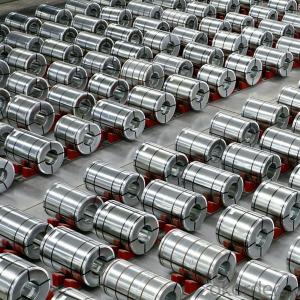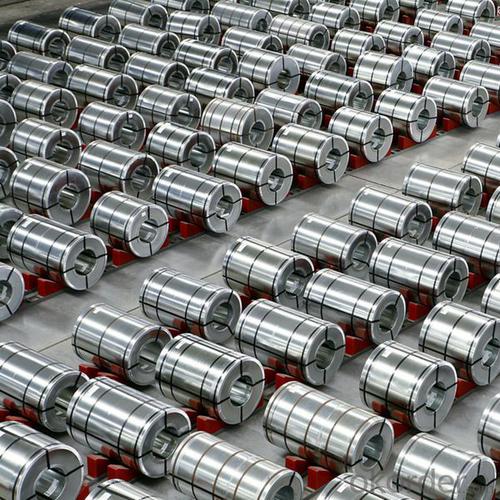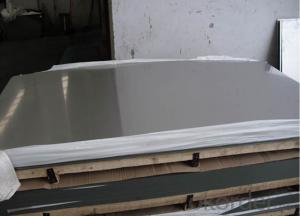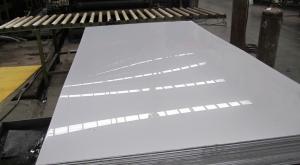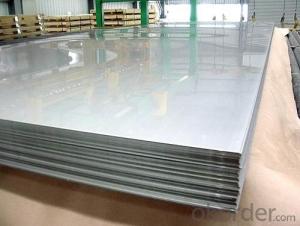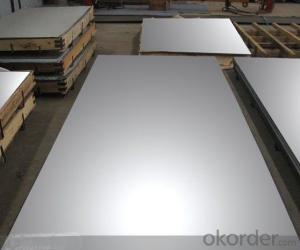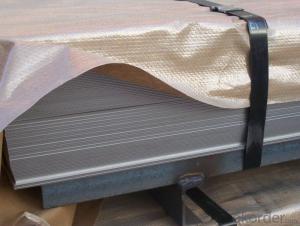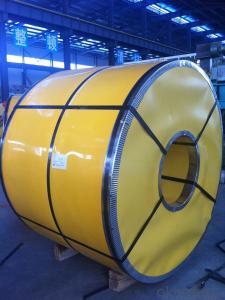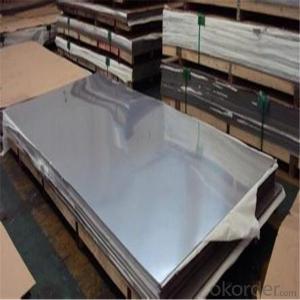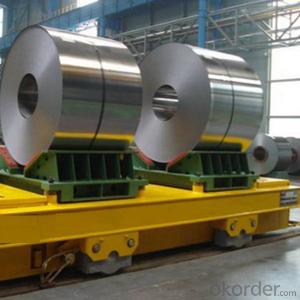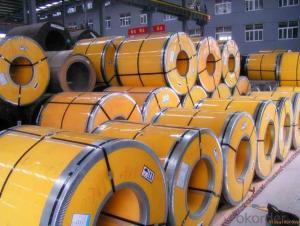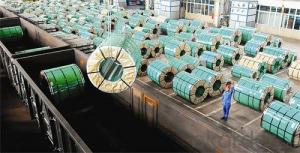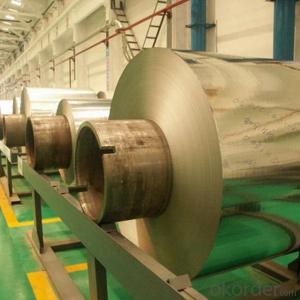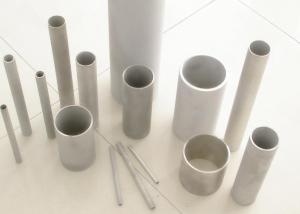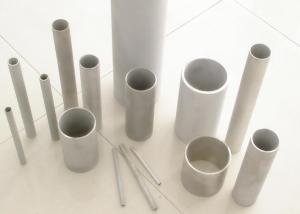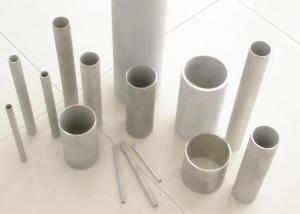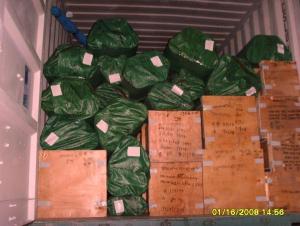Cold Rolled Stainless Steel 304 NO.2B Finish From China Supplier
- Loading Port:
- China main port
- Payment Terms:
- TT OR LC
- Min Order Qty:
- 22 m.t.
- Supply Capability:
- 1000 m.t./month
OKorder Service Pledge
OKorder Financial Service
You Might Also Like
Specification
Products Description for Stainless Steel Coils/Sheets:
Product | stainless steel coils/plates/sheets | ||
Discharge Port | Any Port, China | ||
Size | Coils | Cold Rolled: | Thickness0.3-8mm,Width:280-2100mm |
Hot Rolled : | Thickness3-14mm,Width:650-2100mm | ||
Plates | Thickness2-80mm,Width:1500-3000mm | ||
Coil Weight | About 20 Tons | ||
Grade | 201,202,304/304L/304H,316/316L/316H,321/H,310S,409/L,430 etc. | ||
Technique | Hot Rolled/Cold Rolled | ||
Finish | 2B, BA, 2D, No1, No2, No4,NO.8,SB etc | ||
Edge | Mill Edge / Slitting Edge | ||
Package | In bundles, or as customer's requirement | ||
Place of Origin | Made in China | ||
MOQ | 20 Tons | ||
Specifications for Stainless Steel Coils/Sheets:
Type | 200 series,300 series,400 series |
Thickness | 1.8-8.0mm |
Widthness | 1000/1219/1500mm |
Technique | Hot Rolled/Cold Rolled |
Coil Weight | About 20 Tons |
Finish | NO.1/NO.2B |
Place of Origin | Made in China |
MOQ | 18 ton |
Color | Black,Mirror Finished |
Standard | ASTM, JIS, GB, BS, DIN etc |
Exporting countries | Peru,India,Pakistan,Singpore,Vietnam,South Korea,Malaysia etc. |
After-sales service | Factory Inspection |
Certifications | ISO,SGS |
Packaging | Standard export packing or following customer's demand |
Features of Stainless Steel Coils
(1)Good ductility
(2)Good corrosion resistance
(3)Excellent abrasion resistance and fatigue strength
(4)Good weldability
(5)Oxidation resistant performance
(6)Excellent in high temperature
Payment&Delivery for Stainless Steel Coils/Sheets:
Payment Terms | 100% LC at sight,or 30%TT in advance, balance against B/L copy |
Delivery Time | With 30-40 days after deposit |
Price Terms | Ex-Work, FOB, CNF, CFR, CIF,etc |
Application of Stainless Steel Coils
(1)Boiler heat exchanger,
(2)Chemical industries,
(3)Hardware fields,
(4)Construction material,
(5)Kitchen utensils,
(6)Building construction,
(7)Medical equipment,
(8)Chemical tank,
(9)Pipe etc

Export Markets for Stainless Steel Coils/Sheets:
Our target market is the international market. Every year we export most of products to countries like India, Pakistan, South Korea, Brazil, Australia, South Africa, Spain, Sri Lanka, Taiwan, Hong Kong, etc.
- Q: Are stainless steel sheets suitable for architectural applications?
- Architectural applications greatly benefit from the suitability of stainless steel sheets. This material, known for its versatility and durability, offers numerous advantages for architectural projects. Its exceptional corrosion resistance makes it an ideal choice for outdoor applications exposed to harsh weather conditions. Additionally, stainless steel is easily cleaned and maintained, ensuring a visually appealing and long-lasting finish. Not only does stainless steel provide functional benefits, but it also enhances the architectural design with its aesthetic appeal. Its sleek and modern appearance can complement a variety of styles, ranging from contemporary to industrial. Architects have ample design flexibility as stainless steel can be fabricated into different shapes and sizes. Moreover, stainless steel sheets find extensive use in various architectural applications. They are commonly employed in cladding, roofing, and façade systems, adding a distinct and eye-catching element to buildings. Furthermore, stainless steel can be incorporated into interior design elements such as wall panels, handrails, and decorative finishes, creating a sophisticated and luxurious atmosphere. Overall, stainless steel's exceptional properties, combined with its aesthetic appeal and versatility, make it an excellent choice for architectural applications. Its durability, corrosion resistance, and ease of maintenance make stainless steel sheets a reliable and long-lasting option for architects and designers.
- Q: What is the bending strength of stainless steel sheets?
- The bending strength of stainless steel sheets can vary depending on the specific grade and thickness of the sheet. However, stainless steel is generally known for its high strength and rigidity, making it suitable for various applications that require strong and durable materials.
- Q: Can stainless steel sheets be used for electrical applications?
- Certainly, electrical applications can make use of stainless steel sheets. Stainless steel, an alloy comprising chromium, possesses exceptional resistance against corrosion and oxidation. Such resistance proves advantageous in electrical applications that involve exposure to moisture or harsh surroundings. Stainless steel sheets find utility in a range of electrical components, including electrical enclosures, control panels, junction boxes, and electrical connectors. The robustness and durability of stainless steel render it ideal for these applications, ensuring a dependable and enduring solution. Moreover, the non-magnetic properties of stainless steel offer added benefits in specific electrical applications where minimizing magnetic interference is crucial.
- Q: Are stainless steel sheets suitable for cryogenic storage tanks?
- Yes, stainless steel sheets are suitable for cryogenic storage tanks. Stainless steel is known for its excellent corrosion resistance, which makes it highly suitable for storing low-temperature substances such as liquefied natural gas (LNG), liquid nitrogen, or liquid oxygen. Cryogenic storage tanks require materials that can withstand extreme low temperatures without becoming brittle or losing their strength, and stainless steel meets these requirements. Additionally, stainless steel has good thermal conductivity, which helps in maintaining the desired temperature inside the tank. It is also easy to clean and maintain, making it a preferred choice for cryogenic storage tanks in various industries.
- Q: What is the tensile strength of stainless steel sheets?
- The tensile strength of stainless steel sheets typically ranges from 500 to 1500 megapascals (MPa).
- Q: What is the difference between stainless steel sheets and stainless steel plates?
- Stainless steel sheets and stainless steel plates are both commonly used in various industries and have similar properties, but they differ in terms of thickness and application. Stainless steel sheets are generally thinner than stainless steel plates. They are typically less than 6mm thick and are often used for decorative purposes, such as in kitchen appliances, automotive trim, and signage. Stainless steel sheets can also be easily bent or formed into different shapes, making them suitable for projects that require flexibility. On the other hand, stainless steel plates are thicker and more robust than sheets. They are typically more than 6mm thick and are commonly used in heavy-duty applications, such as construction, machinery, and industrial equipment. Stainless steel plates provide greater strength, durability, and resistance to corrosion, making them suitable for withstanding high temperatures, pressure, and mechanical stress. Another difference lies in the manufacturing process. Stainless steel sheets are usually produced by cold rolling or hot rolling, resulting in a smooth and flat surface. Stainless steel plates, on the other hand, are typically produced through hot rolling followed by heat treatment, which enhances their mechanical properties. In summary, while stainless steel sheets and stainless steel plates are both made of the same material, their thickness, application, and manufacturing process set them apart. Sheets are thinner and more flexible, primarily used for decorative purposes. Plates are thicker, stronger, and designed for heavy-duty applications that require greater strength and durability.
- Q: What is the price range for stainless steel sheets?
- The cost of stainless steel sheets can fluctuate based on several factors, including the thickness, size, and grade of the stainless steel. Typically, thinner sheets begin around $30 per square foot, while thicker or higher-grade sheets can reach up to $150 per square foot. It is crucial to consider that market conditions and supplier pricing policies may also impact prices. Thus, it is advisable to compare prices from various suppliers before finalizing a purchase.
- Q: Are stainless steel sheets scratch resistant?
- Yes, stainless steel sheets are generally scratch resistant due to their composition and protective layer that helps prevent scratches from everyday use. However, it is important to note that excessive force or abrasive materials can still cause scratches on stainless steel surfaces.
- Q: Can stainless steel sheets be used in the automotive industry?
- Yes, stainless steel sheets can be used in the automotive industry. Stainless steel is often used in the construction of automotive parts due to its exceptional strength, durability, and resistance to corrosion. It is commonly used in the production of components such as exhaust systems, fuel tanks, bumpers, and trim. Stainless steel sheets offer a high degree of flexibility in terms of design possibilities, allowing manufacturers to create complex shapes and structures. Additionally, stainless steel's aesthetic appeal and ease of maintenance make it a popular choice in the automotive industry.
- Q: How do you prevent crevice corrosion on stainless steel sheets?
- To minimize the occurrence of crevice corrosion on stainless steel sheets, there are several steps that can be taken: 1. Maintaining cleanliness and performing regular maintenance: It is crucial to keep the stainless steel sheets clean and free from any contaminants. Regular cleaning using mild detergent and water, followed by thorough rinsing and drying, helps eliminate potential corrosive agents. 2. Avoiding the accumulation of debris or moisture: Ensuring that there are no crevices or gaps where debris or moisture can accumulate is essential. Regular inspection and maintenance can help identify and rectify any such areas. Additionally, maintaining effective drainage systems and preventing water pooling can help prevent moisture accumulation, which contributes to crevice corrosion. 3. Applying protective coatings: The application of protective coatings on the stainless steel sheets provides an additional barrier against crevice corrosion. Various types of coatings, such as paints, epoxy coatings, or specialized corrosion-resistant coatings designed for stainless steel, are available. 4. Using suitable gaskets and sealants: When fastening or joining stainless steel sheets, it is important to utilize compatible gaskets and sealants. These components should be corrosion-resistant and act as barriers against moisture and contaminants. Silicone-based sealants or gaskets made from PTFE (polytetrafluoroethylene) are commonly employed for this purpose. 5. Preventing galvanic corrosion: Galvanic corrosion can arise when dissimilar metals come into contact with each other in the presence of an electrolyte, leading to corrosion of the less noble metal. To prevent this, it is crucial to avoid using dissimilar metals in close proximity to stainless steel sheets. When necessary, insulating materials or coatings can be used to separate them. 6. Conducting regular inspections and maintenance: Regularly inspecting the stainless steel sheets for any indications of corrosion and promptly addressing them is crucial in preventing crevice corrosion. This includes checking for signs of pitting, discoloration, or degradation of the protective coatings. Any identified issues should be promptly resolved to prevent further corrosion. By adhering to these preventive measures, crevice corrosion on stainless steel sheets can be effectively minimized, thus ensuring their longevity and preserving their aesthetic appeal.
Send your message to us
Cold Rolled Stainless Steel 304 NO.2B Finish From China Supplier
- Loading Port:
- China main port
- Payment Terms:
- TT OR LC
- Min Order Qty:
- 22 m.t.
- Supply Capability:
- 1000 m.t./month
OKorder Service Pledge
OKorder Financial Service
Similar products
Hot products
Hot Searches
Related keywords
